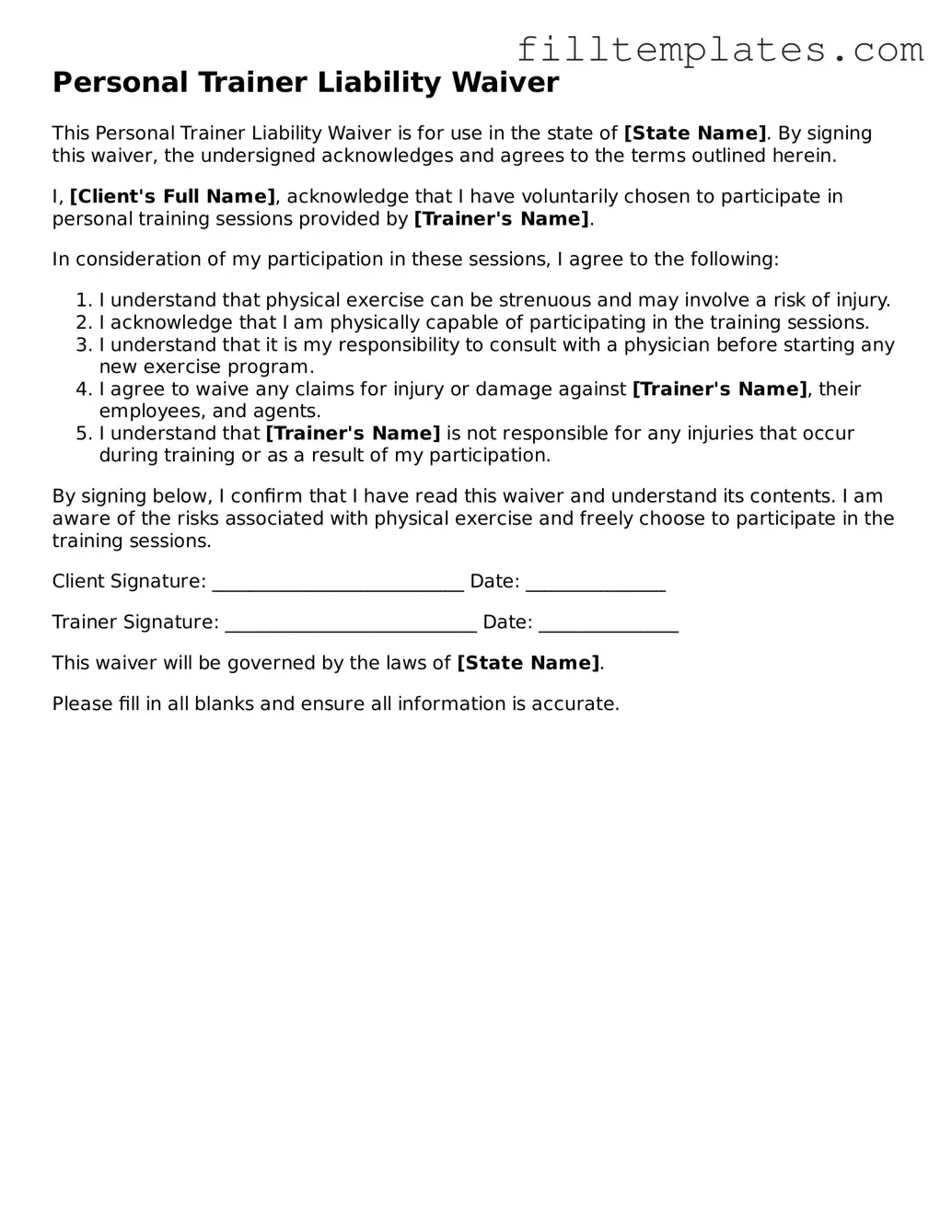Personal Trainer Liability Waiver
This Personal Trainer Liability Waiver is for use in the state of [State Name]. By signing this waiver, the undersigned acknowledges and agrees to the terms outlined herein.
I, [Client's Full Name], acknowledge that I have voluntarily chosen to participate in personal training sessions provided by [Trainer's Name].
In consideration of my participation in these sessions, I agree to the following:
- I understand that physical exercise can be strenuous and may involve a risk of injury.
- I acknowledge that I am physically capable of participating in the training sessions.
- I understand that it is my responsibility to consult with a physician before starting any new exercise program.
- I agree to waive any claims for injury or damage against [Trainer's Name], their employees, and agents.
- I understand that [Trainer's Name] is not responsible for any injuries that occur during training or as a result of my participation.
By signing below, I confirm that I have read this waiver and understand its contents. I am aware of the risks associated with physical exercise and freely choose to participate in the training sessions.
Client Signature: ___________________________ Date: _______________
Trainer Signature: ___________________________ Date: _______________
This waiver will be governed by the laws of [State Name].
Please fill in all blanks and ensure all information is accurate.
